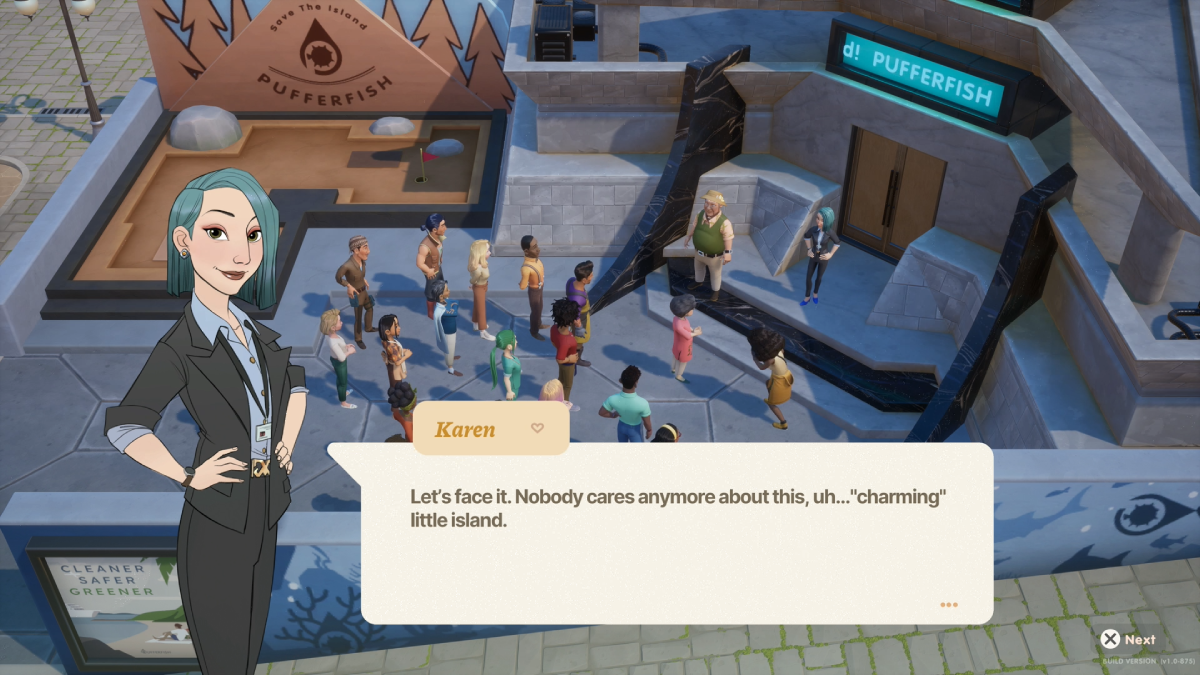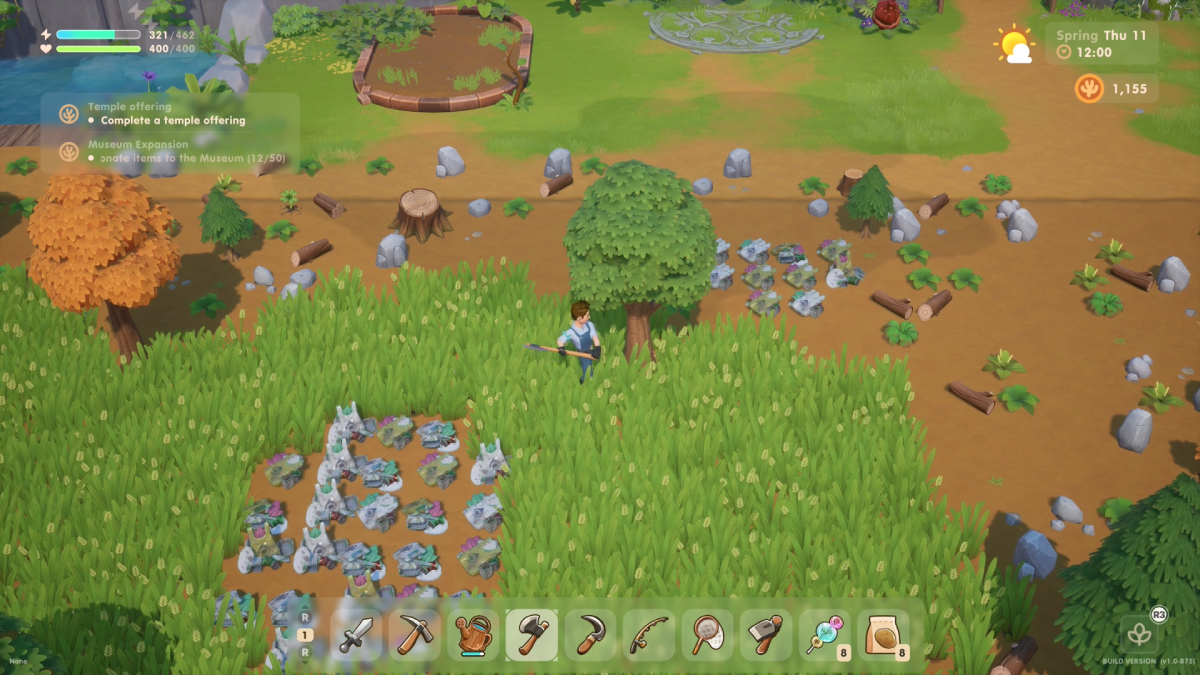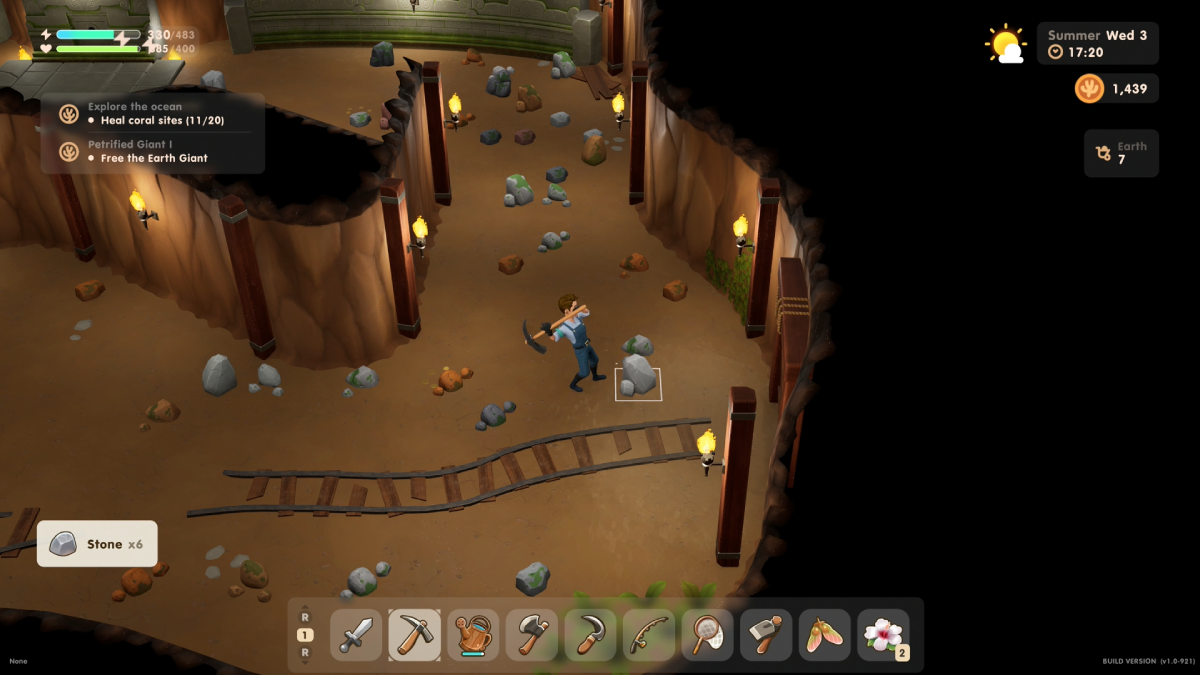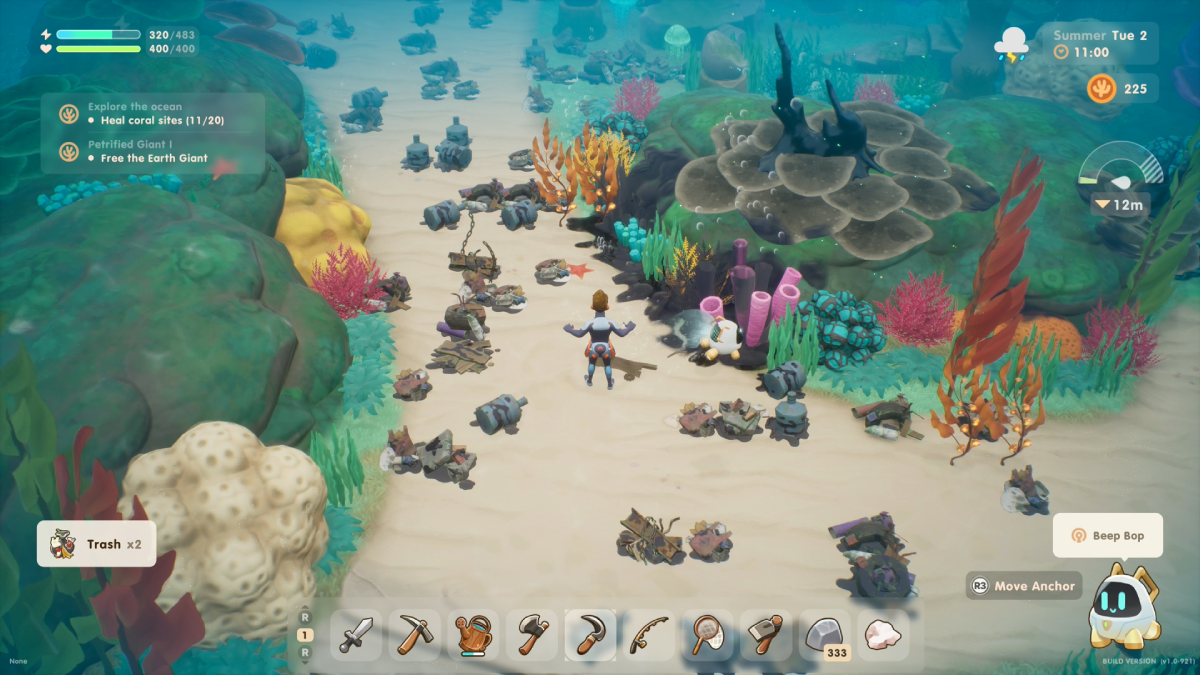Coral Island is part of the increasingly crowded Farming sim genre. Farming games, life sims, cozy games – whatever you want to call them, there are many of them, and it can be tough to stand out. For Coral Island developers, Stairway Games has chosen to focus on a theme of environmental sustainability as you work to restore a dying island.
The premise of Coral Island is simple. You’ve left your big city job and traveled to a small tropical island to set up a farm. Your arrival is seen as a surprise, as the island has seen better days and is ranked poorly by tourist organizations. This is thanks to abundant trash and a stray oil spill that has tainted its once-clear waters. Making matters worse, the island’s future is threatened by a corporate entity whose goals are to choke the life out of its community and turn it into a profitable travel destination.
This is where you come in. Your arrival will not only revive the overgrown and abandoned farmland, but your work will uncover mystical forces that require your help to restore the island’s natural beauty. In gameplay, this involves raising the town’s rank by making offerings to the lake goddess. This is done by donating artifacts and wildlife to the museum and cleaning out the ocean with the help of ancient undersea technology.

Coral Island owes a lot to other similar games in its design. The central farming mechanics will be familiar to players of both Stardew Valley and old-school Harvest Moon/Story of Seasons games. The museum has the same concept as Animal Crossing, albeit with a less charming curator. Even the story portions involving some ocean-dwelling people bear more than a passing resemblance to Rune Factory 3. If you’ve played any of these games, you can jump into Coral Island and know exactly what you’re doing.
This doesn’t mean Coral Island is a dull copy of its influences. Instead, it’s a game that celebrates those influences and borrows the best bits where necessary to make a game that does a lot of good in its own right. For a start, the town is one of the most impressive I’ve seen in the genre. A far cry from other games, which settle for three shacks and a communal tavern, Starlet Town is a thriving little community with spaces that feel lived in. The cast is also huge, with more than 40 residents to meet and a revolving roster of visitors. Each character is named and has their own story to tell as well.
This is one of Coral Island’s greatest strengths. Stairway Games took great strides to make this feel like a community you want to be part of. Buildings are diverse in shape and size, with little details that reveal the personalities of the townsfolk. The residents all have distinct personalities and backstories. There are even scenes that frequently pop up as you go about the day, showing NPCs interacting with one another. This town feels alive despite the threats looming over it.

The experience of playing Coral Island is also a satisfying one. It feels like the developers noted everything that’s caused friction in other games in the genre and worked to remove these elements. This is most noticeable in the inventory, which genuinely impressed me. It’s permanently accessible, with no need to head into the menu to swap anything in and out. My experience was on controller, where the right stick let me cycle through everything in my pocket. Items will simply pop into your hands as soon as they’re highlighted, so it takes seconds to switch tools, dig out seeds, or find gifts to hand over to your fellow residents.
This ease of use extends to everything. Townsfolk can be found easily with both an intuitive town map and an NPC tracker in the directory. All items are clearly marked if they can be donated to the lake temple or museum and are ticked off if you’ve already done so. Even features like an option to slow down the day timer ensure the game never gets in its own way. Coral Island feels good to play, and the only disadvantage of all this is how addictive it can get. The “just one more day” feeling is strong here.
Coral Island does have some issues, however. The one area where the game’s friendly and accessible gameplay style fails to hold up is in the mines. Progression relies entirely on luck, as the exit to the next floor is hidden beneath a randomly chosen rock. In addition, progress is only saved every five floors, so if you run out of stamina and/or time while on floor four, you have to do it all again the next day. It gets tedious extremely quickly. I also have some minor nitpicks about the game’s general progression system.

Ultimately, the premise requires you to rejuvenate the town, but its methods of doing so are a little too abstract. I couldn’t help but notice places like the graveyard and recycling center looking worse for wear and thinking they could become projects you’d gather materials to fix up. Instead, the town automatically repairs and cleans up these areas as you sort out the ocean floor and give offerings to the goddess, which is a missed opportunity in my eyes. The town rank system is also incredibly slow. While I understand this is a game that you’re supposed to take your time with and chip away at, there are times when it can feel like you’re not making any progress at all because the bar moves so slowly.
There are also signs that the game may have left Early Access a little too soon. My experience with the game was full of bugs, especially regarding audio. Music and sound effects frequently don’t play. Tools are far too quiet, especially when fighting enemies in the mines, where the lack of sound during combat is jarring. Music cues were noticeably absent during events such as festivals, as scenes of parades would play in eerie silence. One audio bug has the opposite effect, where the ambient audio of the ocean refuses to stop playing everywhere you go unless you reload the game.
The bugs went beyond audio, though, with UI glitches, occasional control locks requiring a full reset, and a persistent ability to remove furniture from my house were notable issues I encountered. According to the developers, these appear to be bugs exclusive to the console versions of the game (I played on PS5), so PC players may have a better experience than me. However, it’s a testament to the game’s quality that I still loved it despite these issues.

Coral Island is a brilliant, cozy game and essential for any fan of the farming sim genre. It’s got a huge, lively town with spiritual aspects that add an interesting twist to its premise. There are more than enough quality-of-life additions that make its gameplay loop incredibly satisfying. It just might be worth waiting for its bug problem to be sorted out first, though. Once that’s done, feel free to add an extra point to the score.
Coral Island is a vibrant and laid-back reimagining of farm sim games. Be who you want and experience enchanting island living at your own pace—live off the land, nurture animals, build relationships with a diverse cast of townsfolk, and make the world around you a more vital and harmonious place. PS5 version reviewed.
Coral Island is an essential cozy game for any fan of the genre, but it might be worth holding off until its bug problem has been addressed.
- The size of the town even extends to your romance options, with no less than 25 eligible bachelors and bachelorettes.
- The town festivals are a really fun time, with themes from Beach Cleanup to Spooky Day, all with their own unique mini-games.
- Petting every animal on your farm is a requirement for good milk and eggs.

